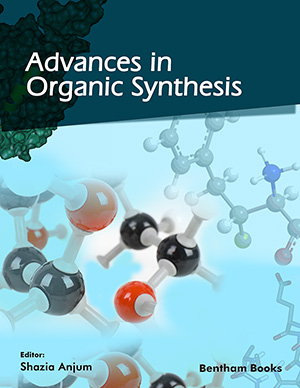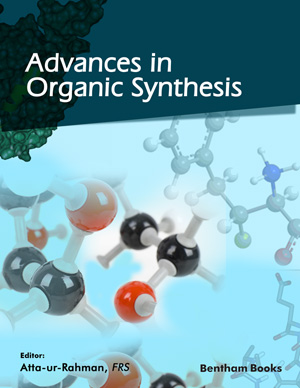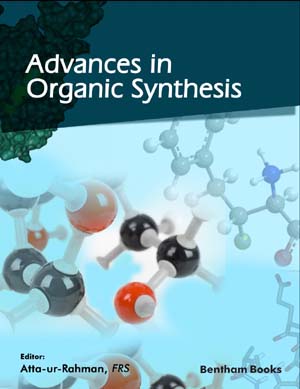Abstract
One of the main problems affecting the world is food scarcity which is occasioned by different causes, including difficult climatic conditions, economic and technical limitations, infrastructure and transportation, food safety and insecurity, and diseases caused by microorganisms (phytopathogens) such as Fusarium oxysporum whose damage triggers a series of irreversible effects on several crops, causing economic losses worldwide. Given the complexity that the chemical control of phytopathogens represents, various investigations have been refocused on exploring new biomimetic actions that lead to synthesizing new compounds with potential antifungal activity. In addition, computational chemistry and chemoinformatics tools (molecular docking and molecular dynamics) make it possible to understand and often predict these compounds' mechanisms of action, thereby formulating Quantitative Structure-Activity Relationship (QSAR) models. These strategies have established an important advance in designing new molecules capable of inhibiting pathogens from a rational development of antifungal compounds. This article reviewed the novel synthetic bioisosteres of secondary metabolites biologically active against Fusarium oxysporum, their synthetic protocols, and the strategies implemented for its control. The most innovative examples of this class of active organic compounds are presented, such as N,S-dialkyl dithiocarbamates, Schiff bases, N-alkyl substituted amides, and several heterocyclic systems with potential antifungal activity. Likewise, the use of computational tools is discussed, showing how these results can conduce to the design of new antifungal agents.
Keywords: Bioisoster, molecular docking, QSAR, molecular dynamics, secondary metabolites, Fusarium oxysporum, organic synthesis.
[http://dx.doi.org/10.1007/s12571-012-0200-5]
[http://dx.doi.org/10.3738/1982.2278.562]
[http://dx.doi.org/10.1007/s11105-020-01205-2]
[http://dx.doi.org/10.1016/j.ygeno.2020.05.021] [PMID: 32454170]
[http://dx.doi.org/10.3389/fpls.2020.01236] [PMID: 32903611]
[http://dx.doi.org/10.1111/j.1398-9995.2006.01049.x] [PMID: 16512812]
[http://dx.doi.org/10.1016/j.reval.2017.05.006]
[http://dx.doi.org/10.1007/s00425-020-03372-8] [PMID: 32236850]
[http://dx.doi.org/10.1094/PDIS.2003.87.1.4] [PMID: 30812698]
[http://dx.doi.org/10.1038/nrmicro1129] [PMID: 15759041]
[http://dx.doi.org/10.1016/j.biocontrol.2009.05.001]
[http://dx.doi.org/10.1099/00221287-148-9-2675] [PMID: 12213914]
[http://dx.doi.org/10.1146/annurev.phyto.36.1.453] [PMID: 15012509]
[http://dx.doi.org/10.1046/j.1469-8137.2003.00700.x] [PMID: 33873407]
[http://dx.doi.org/10.1186/s41938-017-0010-3]
[http://dx.doi.org/10.1016/j.biocontrol.2016.06.004]
[http://dx.doi.org/10.1016/j.envpol.2020.114666] [PMID: 32380396]
[http://dx.doi.org/10.1016/j.ecoenv.2020.110979] [PMID: 32678758]
[http://dx.doi.org/10.1016/j.scitotenv.2020.139031] [PMID: 32387777]
[http://dx.doi.org/10.1016/j.jksus.2020.08.019]
[http://dx.doi.org/10.1016/j.envint.2020.106187] [PMID: 33126065]
[http://dx.doi.org/10.1021/jf011429s] [PMID: 11982391]
[http://dx.doi.org/10.1016/j.phytochem.2007.03.020] [PMID: 17467751]
[http://dx.doi.org/10.1016/j.bmc.2007.06.040] [PMID: 17616463]
[http://dx.doi.org/10.1016/j.bmc.2007.05.072] [PMID: 17590338]
[http://dx.doi.org/10.1016/j.bmc.2013.11.005] [PMID: 24275350]
[http://dx.doi.org/10.1016/j.bmc.2010.02.054] [PMID: 20303277]
[http://dx.doi.org/10.1111/j.1742-4658.2009.07457.x] [PMID: 19922473]
[http://dx.doi.org/10.1071/AP99008]
[http://dx.doi.org/10.1021/ci0503964] [PMID: 16562998]
[http://dx.doi.org/10.3390/molecules21101349] [PMID: 27727186]
[http://dx.doi.org/10.3390/molecules25010045] [PMID: 31877731]
[http://dx.doi.org/10.1016/j.cropro.2015.02.021]
[http://dx.doi.org/10.1094/PHYTO.2001.91.5.449] [PMID: 18943589]
[http://dx.doi.org/10.1371/journal.pone.0108775] [PMID: 25268498]
[http://dx.doi.org/10.1016/j.anifeedsci.2014.10.002]
[http://dx.doi.org/10.1080/10937400590889458] [PMID: 15762554]
[http://dx.doi.org/10.1182/blood.V90.3.999] [PMID: 9242529]
[http://dx.doi.org/10.1016/j.micres.2017.04.011] [PMID: 28602398]
[http://dx.doi.org/10.1002/ps.5127] [PMID: 29931739]
[http://dx.doi.org/10.15446/acag.v64n2.43358]
[http://dx.doi.org/10.1016/j.fgb.2014.06.011] [PMID: 25011008]
[http://dx.doi.org/10.1094/PHYTO-96-0660] [PMID: 18943186]
[http://dx.doi.org/10.3390/ijms161023970] [PMID: 26473835]
[http://dx.doi.org/10.1038/s41598-020-58378-9] [PMID: 32005853]
[http://dx.doi.org/10.1371/journal.pone.0095543] [PMID: 24743270]
[http://dx.doi.org/10.1016/j.jphotobiol.2016.09.008] [PMID: 27623154]
[http://dx.doi.org/10.1007/978-1-4939-6707-0]
[http://dx.doi.org/10.1016/j.plaphy.2017.06.028] [PMID: 28683401]
[http://dx.doi.org/10.1097/QCO.0b013e328014392d] [PMID: 17496567]
[http://dx.doi.org/10.1007/s10096-013-1924-7] [PMID: 23934595]
[http://dx.doi.org/10.1007/s11046-018-0257-6] [PMID: 29564632]
[http://dx.doi.org/10.1111/j.1470-9465.2004.00845.x] [PMID: 14748803]
[http://dx.doi.org/10.1016/j.agee.2014.08.005]
[http://dx.doi.org/10.1371/journal.pone.0083404] [PMID: 24340100]
[http://dx.doi.org/10.1186/s12864-016-2568-7] [PMID: 26988219]
[http://dx.doi.org/10.1038/s41597-020-0567-7] [PMID: 32661237]
[http://dx.doi.org/10.1016/j.soilbio.2007.07.002]
[http://dx.doi.org/10.1094/PHYTO-08-18-0320-RVW] [PMID: 30461350]
[http://dx.doi.org/10.1016/j.pbi.2010.04.004] [PMID: 20471307]
[http://dx.doi.org/10.1007/s10681-013-0904-4]
[http://dx.doi.org/10.1080/09670874.2015.1043972]
[http://dx.doi.org/10.3389/fpls.2018.01468] [PMID: 30405651]
[http://dx.doi.org/10.1016/j.cropro.2015.01.007]
[http://dx.doi.org/10.2478/v10102-009-0001-7] [PMID: 21217838]
[http://dx.doi.org/10.1155/2012/135479]
[http://dx.doi.org/10.1016/S0261-2194(01)00066-7]
[http://dx.doi.org/10.1007/s11120-012-9719-8] [PMID: 22302592]
[http://dx.doi.org/10.1533/9781855736504.1.142]
[http://dx.doi.org/10.1016/B978-0-12-385007-2.00022-X]
[http://dx.doi.org/10.3390/molecules26133997] [PMID: 34208916]
[http://dx.doi.org/10.3390/agronomy10081156]
[http://dx.doi.org/10.1016/j.tplants.2011.11.002] [PMID: 22209038]
[http://dx.doi.org/10.1590/0103-8478cr20151164]
[http://dx.doi.org/10.1039/C7RA01574G]
[http://dx.doi.org/10.1111/j.1365-3059.2006.01497.x]
[http://dx.doi.org/10.1080/15592324.2019.1707348] [PMID: 31884882]
[http://dx.doi.org/10.1016/j.phytochem.2019.112188] [PMID: 31683228]
[http://dx.doi.org/10.1002/chin.201511346]
[http://dx.doi.org/10.1155/2013/893512]
[http://dx.doi.org/10.1002/anie.200702965] [PMID: 18022986]
[http://dx.doi.org/10.1021/ol300874c] [PMID: 22582888]
[http://dx.doi.org/10.1016/j.bmc.2006.01.054] [PMID: 16480879]
[http://dx.doi.org/10.1155/2012/145028]
[http://dx.doi.org/10.4103/0110-5558.72428] [PMID: 22247869]
[http://dx.doi.org/10.3329/jsr.v2i3.4899]
[http://dx.doi.org/10.1016/j.micpath.2017.07.008] [PMID: 28729223]
[http://dx.doi.org/10.1007/BF02980020] [PMID: 14609123]
[http://dx.doi.org/10.1016/S2221-1691(12)60072-0] [PMID: 23569946]
[http://dx.doi.org/10.1007/s00894-012-1586-x] [PMID: 23053004]
[http://dx.doi.org/10.1007/s11426-006-0225-8]
[http://dx.doi.org/10.1016/j.ejmech.2009.03.032] [PMID: 19419802]
[http://dx.doi.org/10.1016/j.jscs.2011.10.022]
[http://dx.doi.org/10.3390/molecules180910609] [PMID: 24002137]
[http://dx.doi.org/10.1016/j.ejmech.2020.112356] [PMID: 32485531]
[http://dx.doi.org/10.3390/molecules21010127] [PMID: 26805801]
[http://dx.doi.org/10.1016/j.tet.2017.03.047]
[http://dx.doi.org/10.1039/D0GC02976A]
[http://dx.doi.org/10.3390/molecules23102615] [PMID: 30322008]
[http://dx.doi.org/10.1021/acs.jmedchem.0c00530] [PMID: 32686940]
[http://dx.doi.org/10.1016/j.mencom.2020.09.028]
[http://dx.doi.org/10.1016/j.molstruc.2020.129255]
[http://dx.doi.org/10.1016/j.eng.2019.09.011]
[http://dx.doi.org/10.1016/j.bioorg.2020.104129] [PMID: 32745757]
[http://dx.doi.org/10.1016/j.ijbiomac.2019.09.127] [PMID: 31726150]
[http://dx.doi.org/10.1016/j.arabjc.2017.05.004]
[http://dx.doi.org/10.14233/ajchem.2020.22823]
[http://dx.doi.org/10.15406/ppij.2018.06.00199]
[http://dx.doi.org/10.1111/lam.13356] [PMID: 32777092]
[http://dx.doi.org/10.1021/acsomega.2c02614] [PMID: 35874194]
[http://dx.doi.org/10.1016/j.bmcl.2019.126774]
[http://dx.doi.org/10.1016/j.bmc.2019.02.009] [PMID: 30765301]
[http://dx.doi.org/10.1016/j.tetlet.2020.152745]
[http://dx.doi.org/10.3390/ijms15035115] [PMID: 24663060]
[http://dx.doi.org/10.1517/17425255.2012.664636] [PMID: 22432718]
[http://dx.doi.org/10.2174/138945009787581122] [PMID: 19275559]
[http://dx.doi.org/10.1038/sj.bjp.0707305] [PMID: 17549047]
[http://dx.doi.org/10.3389/fchem.2020.00612] [PMID: 32850641]
[http://dx.doi.org/10.1186/2008-2231-20-46] [PMID: 23351328]
[http://dx.doi.org/10.1074/jbc.M113.497990] [PMID: 24047900]
[http://dx.doi.org/10.1016/j.molstruc.2019.126936]
[http://dx.doi.org/10.22201/fq.18708404e.2019.2.67211]
[http://dx.doi.org/10.1021/acsomega.9b01098] [PMID: 31497688]



























